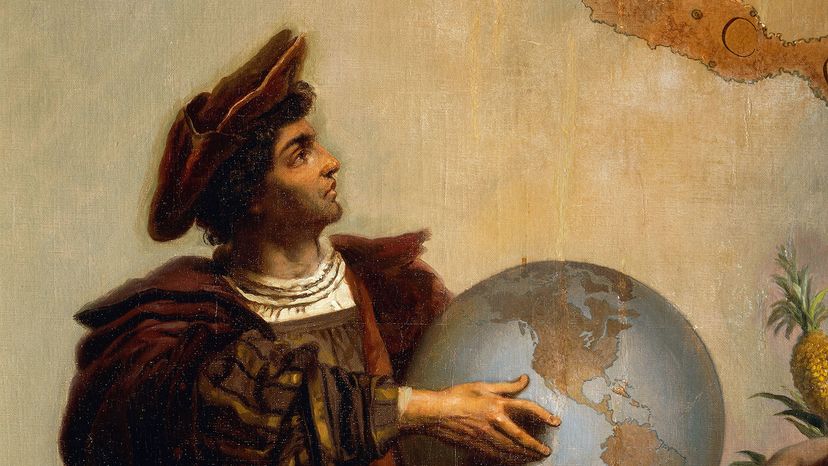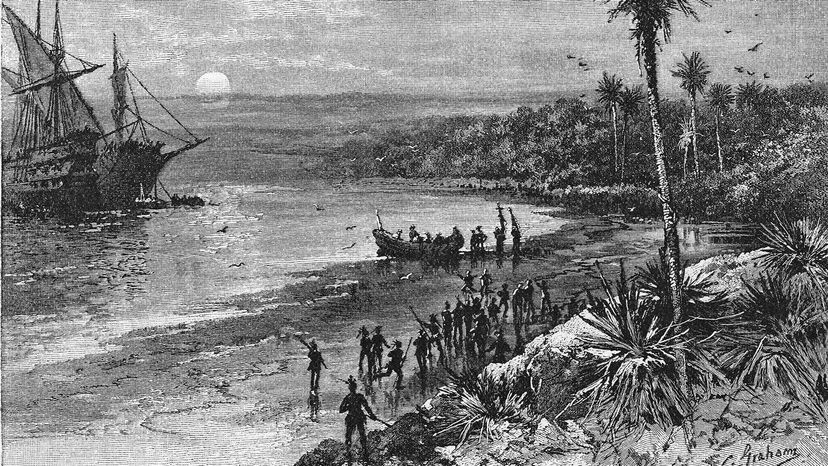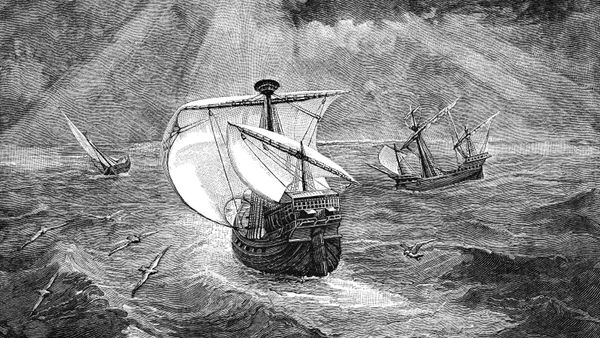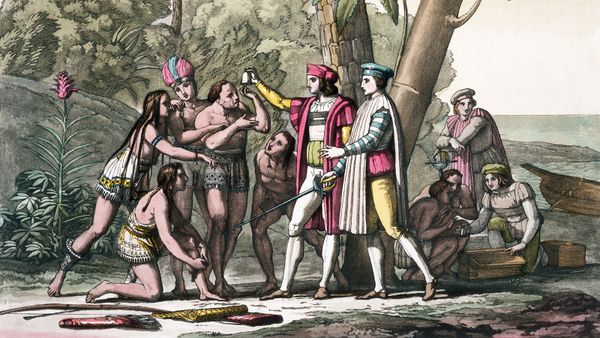In recent decades, Columbus has been vilified by critics who blame him for the eventual deaths of millions of native people who contracted European diseases or fell to the sword of conquistadors and colonists. While that's a lot of death to place on the shoulders of one man, Columbus's direct interactions with the Taíno natives on Hispaniola were also disastrous.
It's estimated that 300,000 Taíno lived on Hispaniola in 1492. Just 16 years later, that number had dwindled to 60,000. By 1548, only 500 remained, according to Columbus biographer Laurence Bergreen. As many as 50,000 are believed to have committed mass suicide rather than to live under Spanish rule.
Columbus's fiercest critics label him a murderer who willfully committed genocide. Kris Lane, a historian of colonial Latin America, disagrees. Lane recognizes Columbus's personal crimes, which included rounding up and selling natives as slaves, and working some Taíno to death in gold mines. But he doesn't believe that Columbus was intent on wiping the Indians out, even if that was the result.
"Was Columbus an active protector of Native Americans?" wrote Lane in the Washington Post. "No. Did he wish to eliminate them? No. Did genocide directly result from his decrees and his family's commercial aims? Yes."





